The St. Louis heat and humidity we reported at the beginning of July is continuing unabated as the month goes on. Nonetheless, blooms are blooming! If you visit us to check out these flowers, please bring plenty of water and plan your visit for early morning or late afternoon.
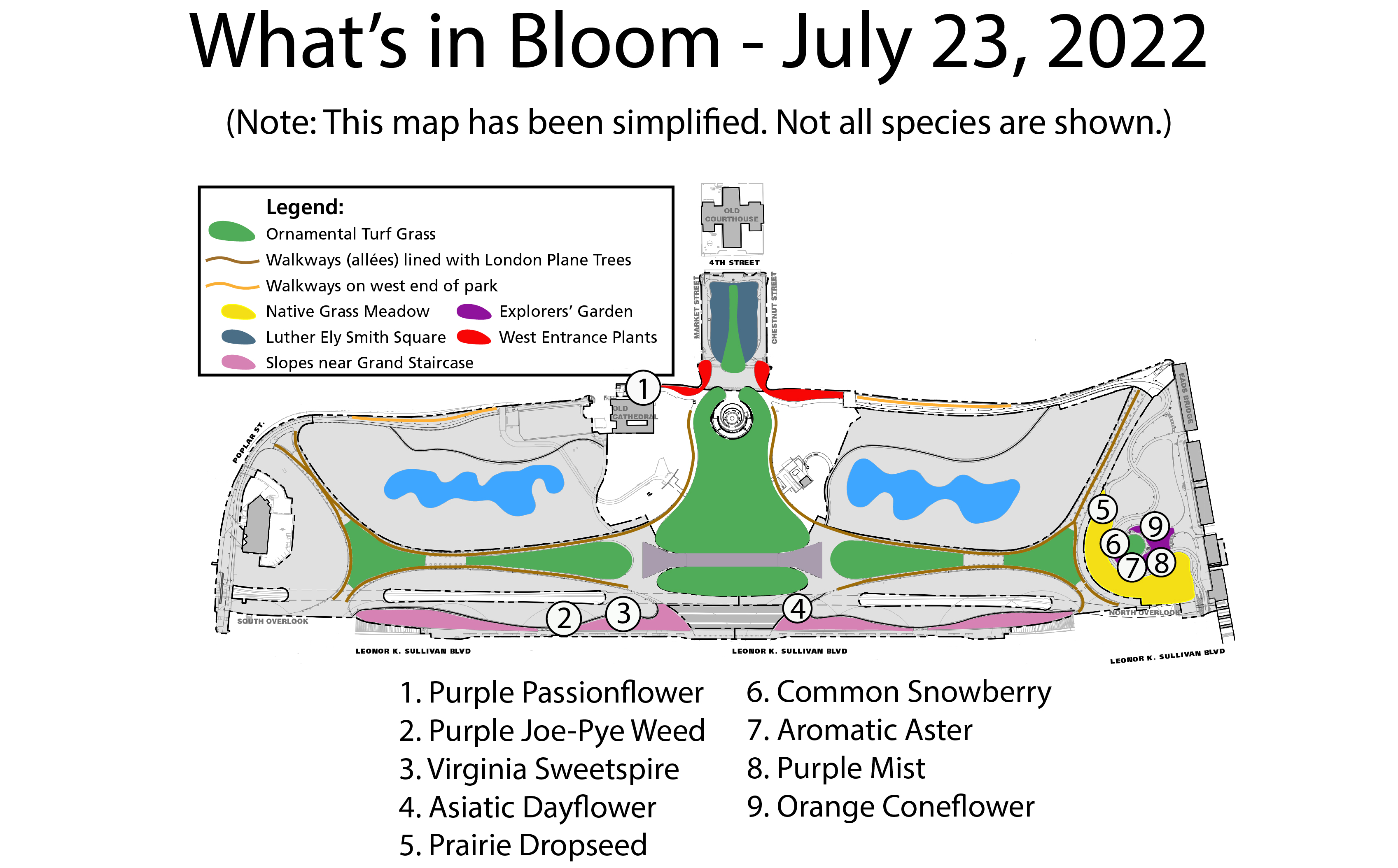
1. Purple Passionflower, Passiflora Incarnata. Blooming near the Old Cathedral.
 NPS Photo
NPS Photo
This exceptionally stunning flower is enough to stop you in your tracks. Although it looks like something you might expect to see in a Costa Rican jungle, it is actually a Missouri native and is also found in many other locations in the southeast USA. In addition to being gorgeous, it also produces delicious fruit that tastes much like tropical passionfruit. Both the fruit and the boiled leaves have been a staple food for the Cherokee since time immemorial. Purple Passionflower is hardy and easy to grow; in fact, in some conditions it can even become weedy. It grows as a vine, usually twining up other plants. The individuals by the Old Cathedral are doing exactly that. Look for pops of purple near the walkways to find the blossoms!
2. Purple Joe-Pye Weed, Eupatorium purpureum. Blooming near ADA walkway near Grand Staircase.
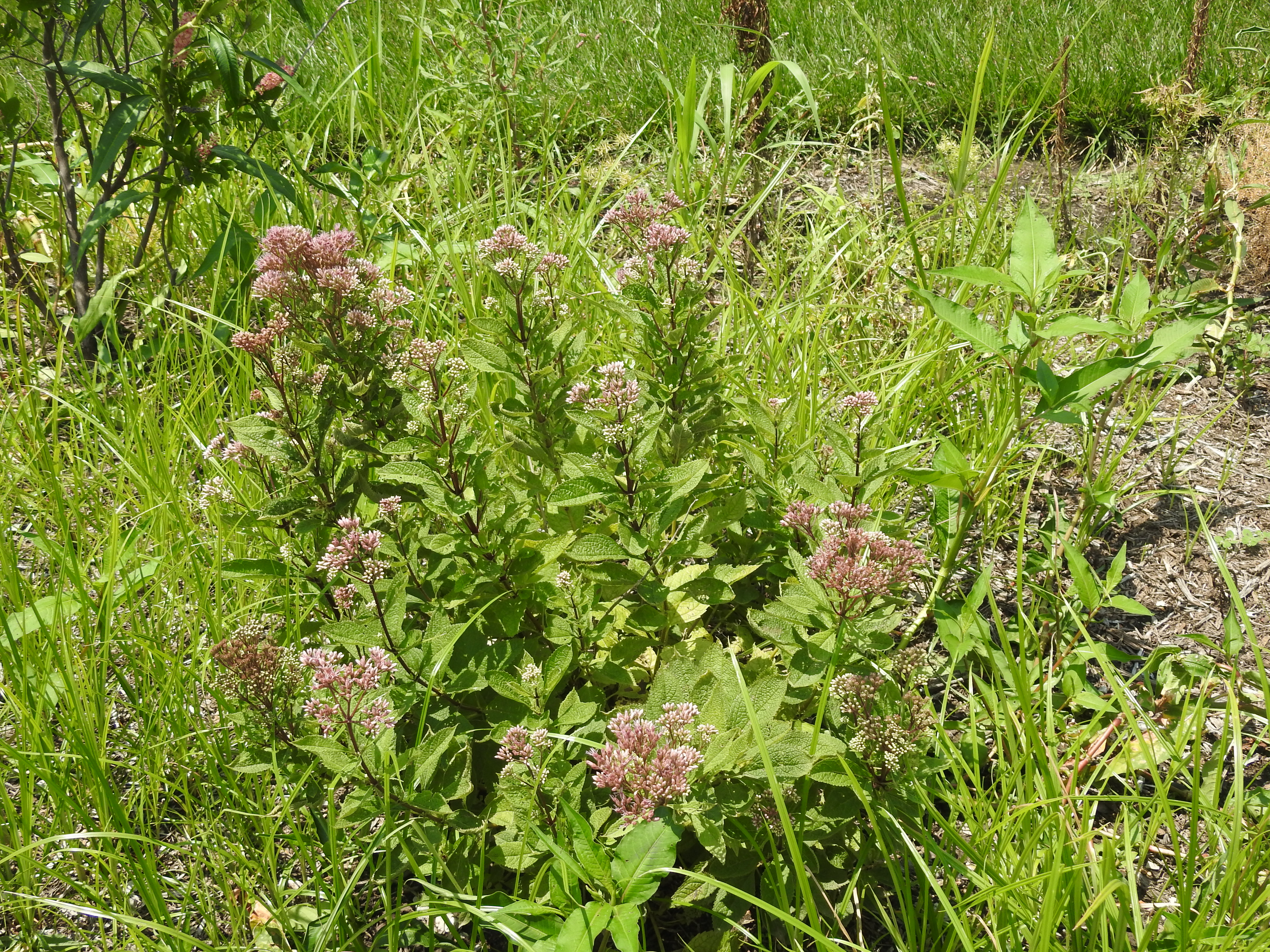
NPS Photo
Most of our visitors have probably seen this plant before; it is very widespread throughout most of the United States. Although it is native to the East, it has been naturalized elsewhere. The flowers are said to smell like vanilla, but the scent of different populations can vary. The blooms are full of nectar that attracts butterflies and other pollinators, and several species of butterfly and noth caterpillars feed on the plant. All this insect activity means birds that want to eat the insects are also interested in this plant. Overall, this is a great species to plant for supporting native animal species.
3. Virginia Sweetspire, Itea virginica. Blooming near ADA walkway near Grand Staircase.

NPS Photo
This species has been featured on the blog before, so we won’t repeat too much here; however, the previous Virginia Sweetspire plants we wrote about had white flowers, and these are pink.
4. Asiatic Dayflower, Commelina communis. Blooming on north side of Grand Staircase.
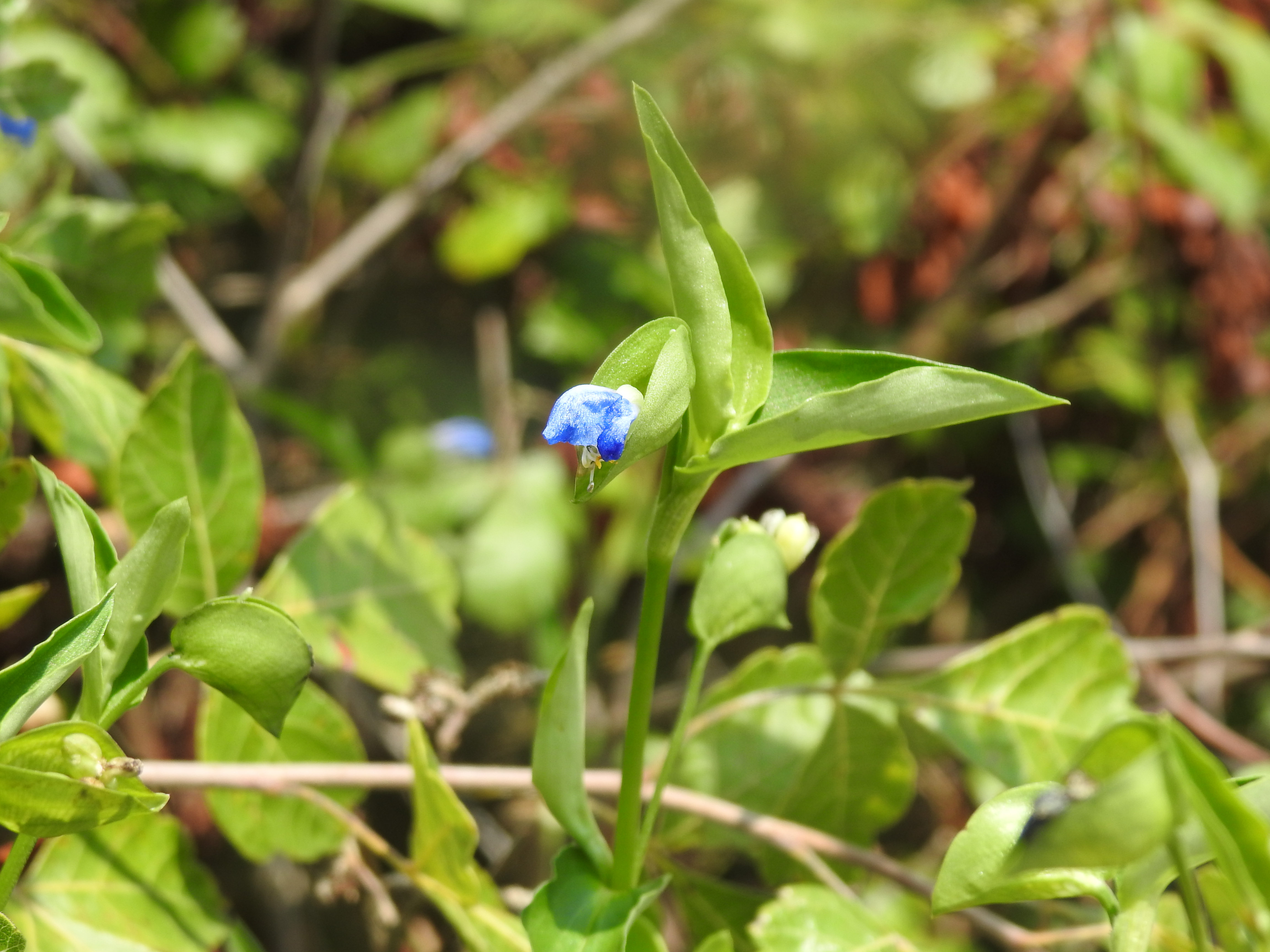
NPS Photo
These flowers are tiny (about the size of a dime) but their brilliant blue color is striking nonetheless. The plant got its name “dayflower” because the individual flowers bloom for only one day. Asiatic Dayflower is an introduced species from East Asia and is becoming an agricultural pest in the Midwest due to its aggressive spread and its resistance to herbicides. It’s unknown whether the specimens by the Grand Staircase were planted intentionally or introduced accidentally; either way, you can check them out if you’re in the area.
5. Prairie Dropseed, Sporobolus heterolepis. Blooming in the native grass prairie, especially near the staircases.
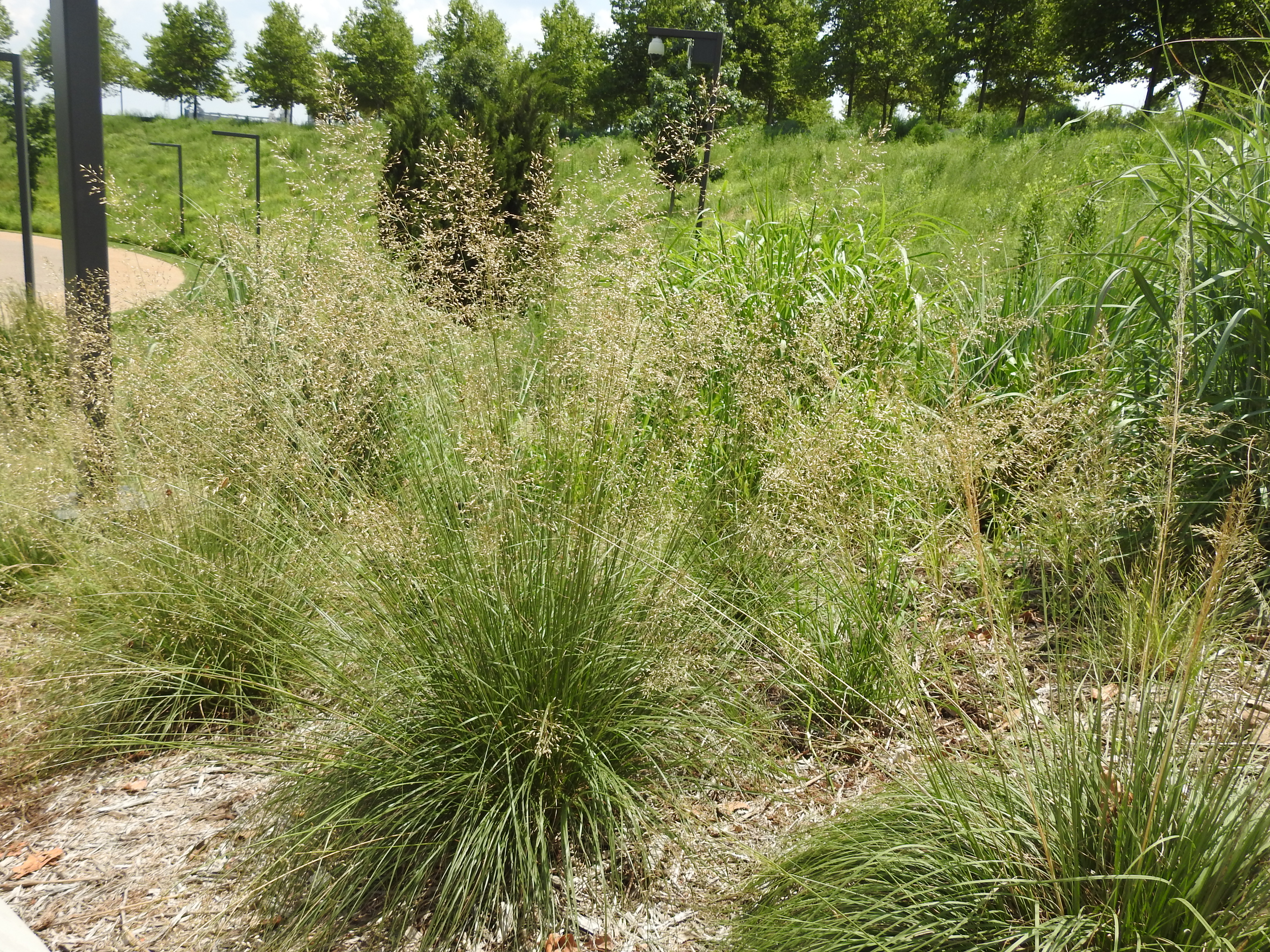
This grass is not currently "blooming", but it is producing impressive and easy-to-find seeds. Many birds like the seeds, and Plains Indians since time immemorial have ground the seeds to make a delicious and healthy flour. Prairie Dropseed is one of the smallest grasses in a prairie ecosystem, reaching a maximum height of about 3 feet. It’s long-lived when established and propagates slowly through root rhizomes. It is a Missouri native that is also found in 26 other states.
6. Common snowberry, Symphoricarpos albus. Blooming in Explorers' Garden.
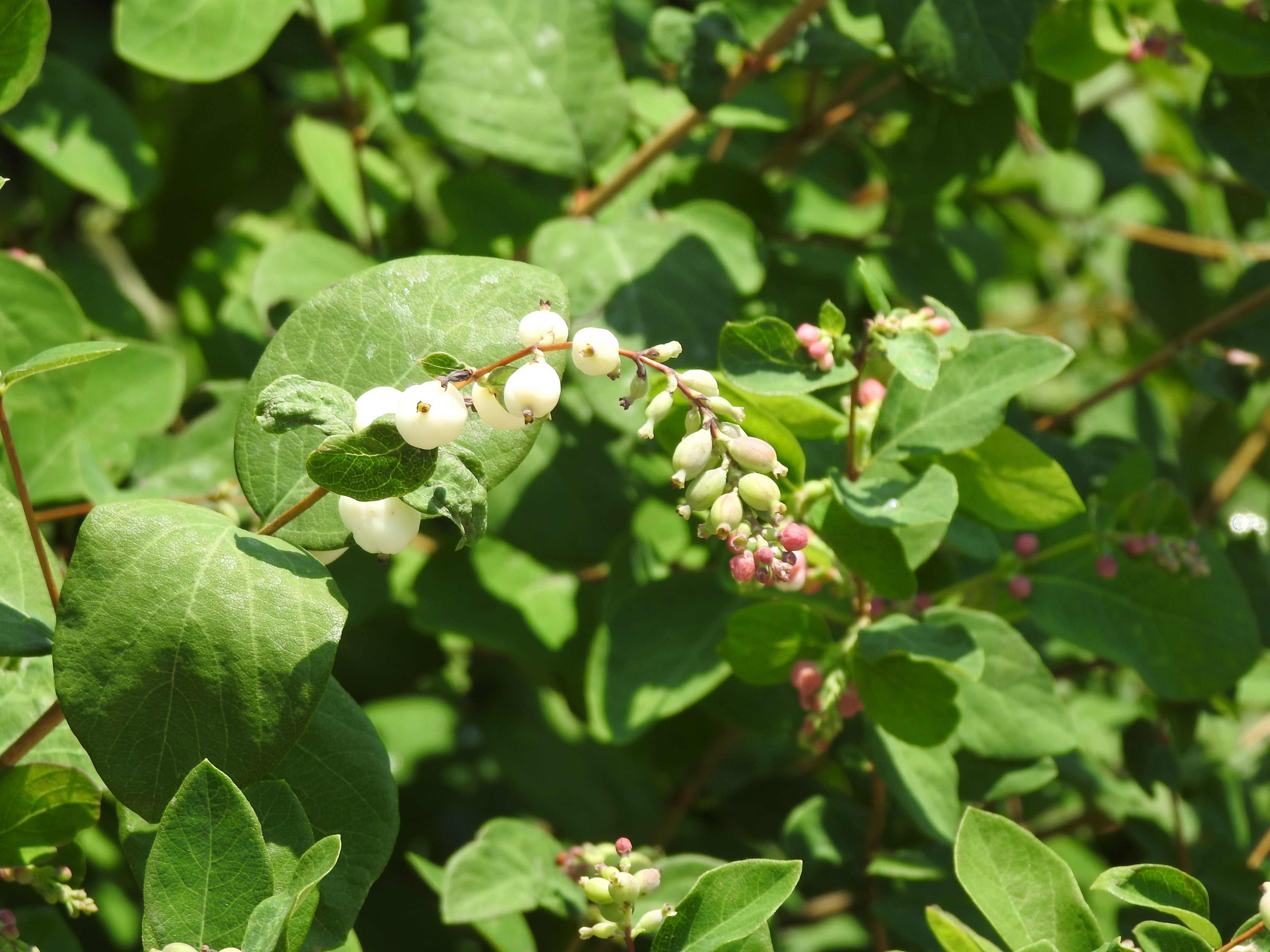
As you could predict by its name, Common Snowberry produces showy white fruits. It’s native to the northern USA and Canada, and is one of the plants that Meriwether Lewis gathered on the famous Corps of Discovery Journey. It forms dense thickets in the wild, and the white berries stay on the plant all winter long. This species is important as a food source for many wildlife species, but it is toxic to humans and can cause vomiting if ingested.
7. Aromatic Aster, Aster oblongifolius. Blooming in the Explorers' Garden.
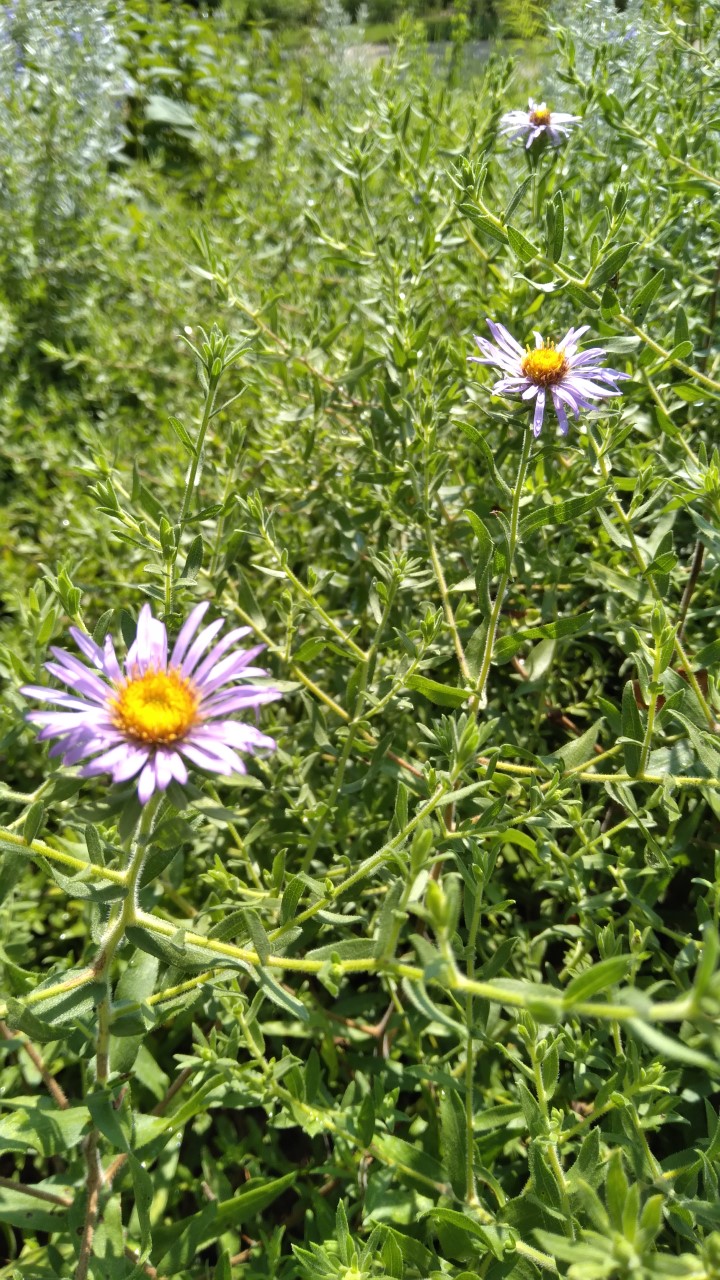
Photo: A. Prosser, NPS.
The word “aster” comes from the Greek for “a star.” Like all asters, aromatic aster has daisy-like flowers which feature petals shooting off in all directions from a central point. This species can be blue or purple and is very widespread throughout almost all of the USA. It is a late-summer species, so it will likely continue blooming for the next couple months. Usually it’s one of the last flowers blooming before a fall frost. Many kinds of insects feed on and get nectar from this plant.
8. Purple Mist, Conoclinium coelestinum. Blooming in the Explorers' Garden.
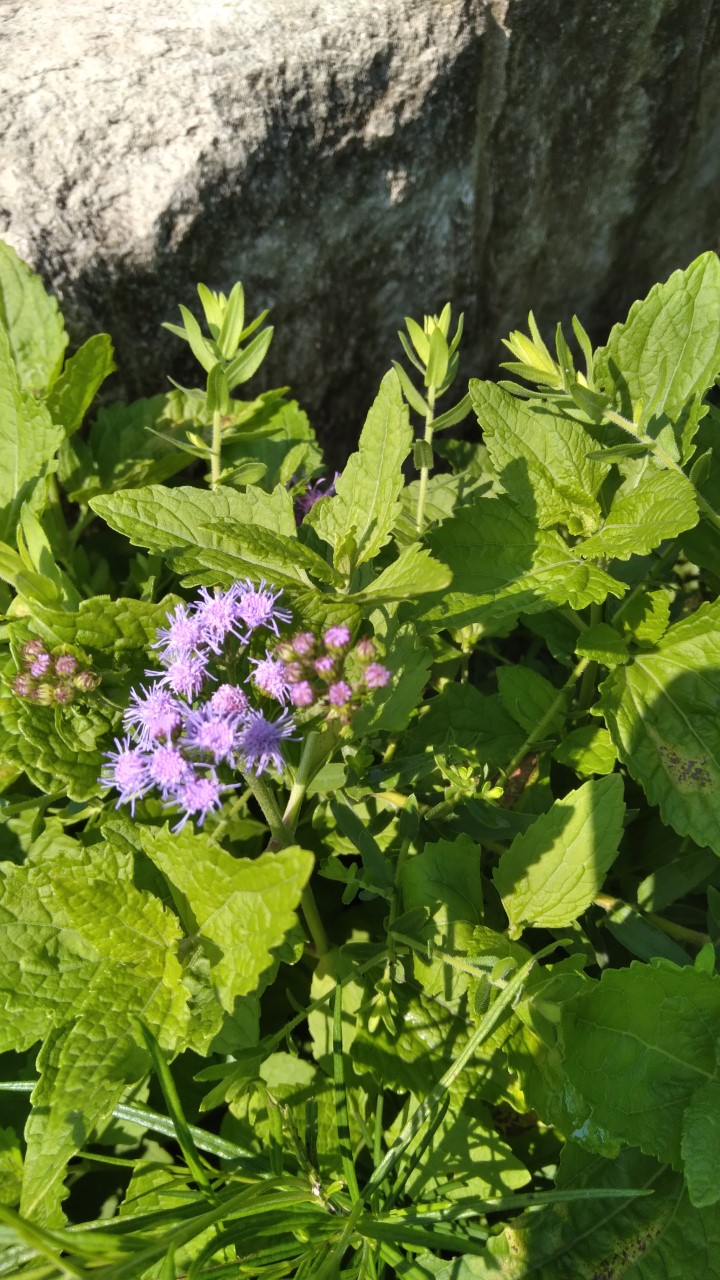 Photo: A. Prosser, NPS.
Photo: A. Prosser, NPS.
These fuzzy flowers look similar to Joe-Pye Weed (which is also blooming on the grounds right now!) and are also attractive to pollinators. Purple mist is native to the southern and central USA. It spreads quickly and is very hardy once established.
9. Orange Coneflower, Rudbeckia fulgida. Blooming in the Explorers' Garden.
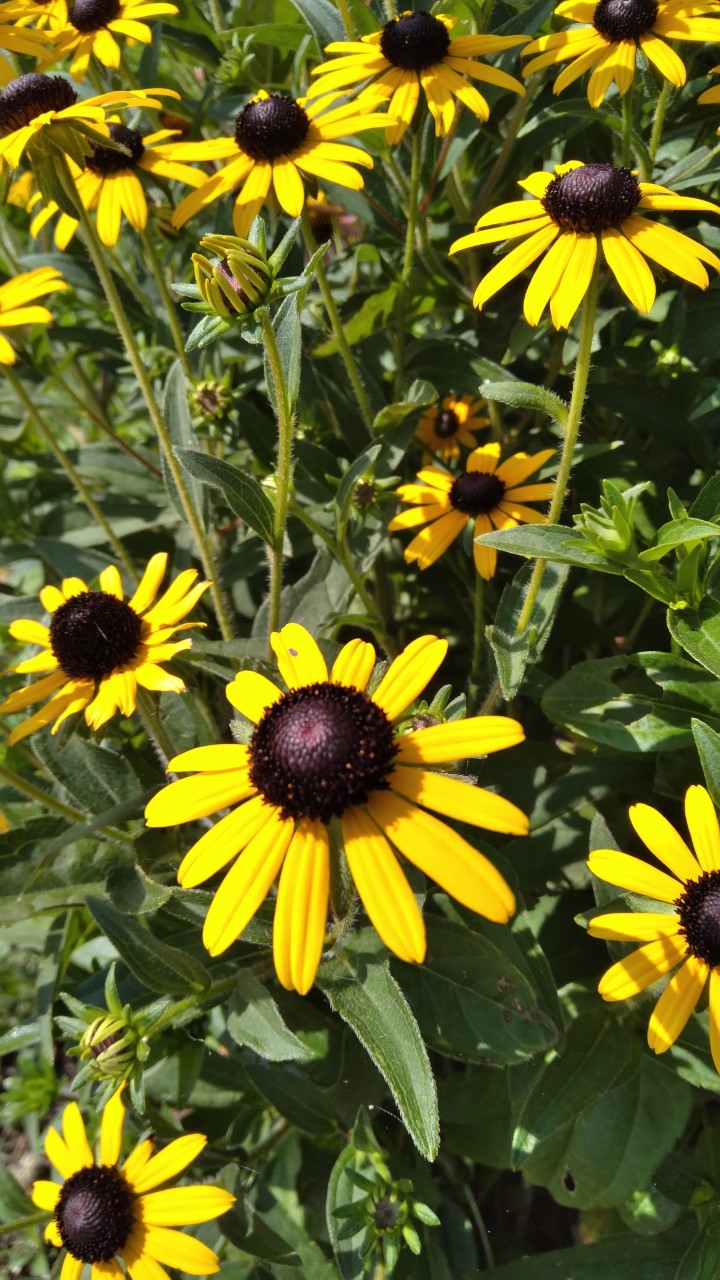 Photo: A. Prosser, NPS.
Photo: A. Prosser, NPS.
Another week, another Rudbeckia. Like the Purple Coneflower, Missouri Coneflower, and Yellow Coneflower that have mentioned in previous blog posts, the Orange Coneflower (Rudbeckia fulgida) is a Missouri native that is hardy and resilient once established.
